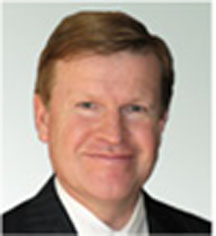Harold James is Professor of History and International Affairs at Princeton University and Marie Curie Professor of History at the European University Institute, Florence. His most recent book is The Creation and Destruction of Value: The Globalization Cycle.
 By Harold James
By Harold James
FLORENCE – Fears about sovereign debt and doubts about the euro rescue package have pushed the question of international reserve currencies to the fore. Until this spring, most observers had assumed that the share of the dollar in international reserves would gradually fall, while that of the euro would rise, and that the world would gradually and smoothly make a transition to a multi-reserve regime.
Up to now, the global financial crisis was historically remarkable in having no major impact on foreign-exchange markets. The shares of the major reserve currencies were stable, with the dollar accounting for 62% of foreign-exchange reserves in 2009 and the euro 27%. Any major changes came not from deliberate decisions by central banks to reallocate reserves, but rather from the simple arithmetic of changing exchange rates: a stronger dollar raised the dollar’s share in total global reserves, while a weaker dollar reduced it.
In fact, a sort of balance of terror obstructed any major reallocations by the big holders of reserves. An effort to diversify by selling a particular asset would have such a large impact on markets that it would produce large losses for any central bank that tried it.
The euro crisis has challenged the view that the transition to a multi-reserve regime will have a smooth dynamic. Asian and Middle Eastern central banks with large euro reserves have become jittery about the euro’s political underpinnings. But America’s large fiscal deficit, along with continuing uncertainty about its financial markets, mean that the dollar is also potentially vulnerable.
There are some historical precedents for this situation. In the 1960’s, the British pound was the world’s second reserve currency. American policymakers expended considerable effort devising ways to support the pound, because they knew that the same factors that made the pound vulnerable also threatened the dollar. The pound was thus seen as part of the dollar’s perimeter defense. Critics saw it as a case of two lame ducks propping each other up.
The recent frenzy of high-level telephone diplomacy, in which US President Barack Obama pressed European leaders to act to rescue the euro, showed this dynamic to be alive and well. It was an extraordinary demonstration not only of how difficult European leaders found coordinating their response to the crisis to be, but also of the strategic importance of a second reserve currency for the largest reserve currency. The US economy would be highly vulnerable in the case of a euro collapse, so today’s lame ducks need to embrace each other.
The 1960’s analogy raises the question of whether and when a new major international currency could emerge. Within the space of a few years, the pound’s reign as a trusted international currency was over. The yen and the Deutschemark emerged as new potential reserve currencies, although the Japanese and German governments and central banks were profoundly worried about this new role for their currencies and the volatility that it might entail.
In retrospect, many people have cast the shift as inevitable, but at the time it seemed wildly improbable. The rise of the yen and the Deutschemark occurred only 20 years after the catastrophic devastation of World War II, which had inevitably been accompanied by inflation. During the immediate postwar occupation, US military planners had to impose new currency regimes and central banking institutions.
Even more extraordinarily, when these new currencies emerged as the new claimants to reserve status, they had only recently become convertible for current-account transactions, and capital flows were still restricted. Germany had moved to current-account convertibility in 1958, but Japan only in 1964. More over, Japan in particular was not especially wealthy in an international comparison, and neither country had deep or well-developed capital markets.
Only one fact really mattered: powerful export performance, with both countries maintaining large trade surpluses over several years and through different stages of the economic cycle. This made them appear a source of greater currency stability than the US and Britain. The buildup of assets associated with external surpluses, together with continuing export strength, looked like a guarantee of their currencies. Unlike the dollar and the pound, the yen and the Deutschemark did not depend on attracting foreign inflows.
Of course, developing as a potential reserve currency created a substantial vulnerability. Both Japan and Germany were slow in liberalizing their domestic financial systems as they tried to limit capital inflows for a substantial period of time in order to avoid rapid currency appreciation and the consequent erosion of their export competitiveness.
China moved to current-account convertibility in 1996, but retained a substantial number of controls on capital movements, which have served as a shield against financial contagion. Are these still needed?
The lesson of the 1960s suggests that a fully convertible renminbi could rapidly become a major international reserve currency. It would be attractive not simply because the People’s Bank of China and other major Chinese institutions have massive overseas assets, but because China produces goods that the world’s consumers continue to want. The historical experience of Germany and Japan, and the recent financial turmoil of the big industrialized countries, seems to warn against such a policy shift.
But, as a big country, China would not have the vulnerabilities of smaller strong currencies (the Norwegian krone or the Swiss franc, for example). And, as a provider of a reserve currency, China would not need to continue its own quest for reserves, which has been a major contributing factor to global financial instability. The addition of the renminbi as a possible reserve option would free today’s lame ducks from their forced marriage.





